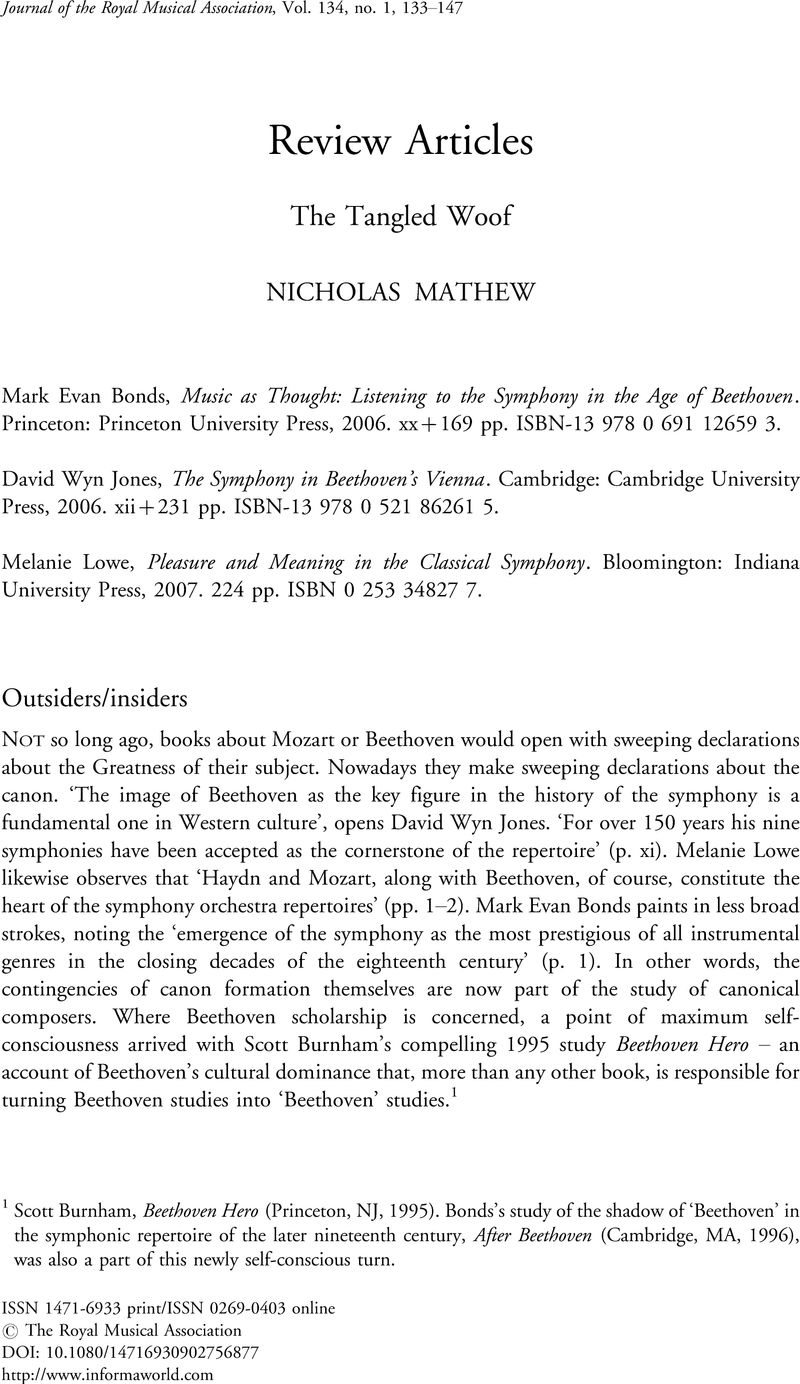No CrossRef data available.
Article contents
Abstract

- Type
- Review Articles
- Information
- Copyright
- Copyright © The Royal Musical Association
References
1 Scott Burnham, Beethoven Hero (Princeton, NJ, 1995). Bonds's study of the shadow of ‘Beethoven’ in the symphonic repertoire of the later nineteenth century, After Beethoven (Cambridge, MA, 1996), was also a part of this newly self-conscious turn.
2 Carl Dahlhaus, Nineteenth-Century Music, ed. J. Bradford Robinson (Berkeley, CA, 1989), 76.
3 Cited in Terry Eagleton, Ideology: An Introduction (London, 2007), 3.
4 Wye Jamison Allanbrook, Rhythmic Gesture in Mozart: Le Nozze di Figaro and Don Giovanni (Chicago, IL, 1983); Leonard Ratner, Classic Music: Expression, Form, and Style (London, 1985).
5 James Johnson, Listening in Paris: A Cultural History (Berkeley, CA, 1995). Several other recent ‘listening’ titles come to mind from various corners of the discipline: Hearing Cultures: Essays in Sound, Listening, and Modernity, ed. Veit Erlmann (New York, 2004); Matthew Riley, Musical Listening in the German Enlightenment (Aldershot, 2004); and Music as Heard: Listeners and Listening in Medieval and Early Modern Europe, ed. Rob Wegman, Musical Quarterly, 82 (1998), 427–691.
6 I am thinking of Hans Eggebrecht, Zur Geschichte der Beethoven-Rezeption (Mainz, 1972).
7 Mark Evan Bonds, ‘Idealism and the Aesthetics of Instrumental Music at the Turn of the Nineteenth Century’, Journal of the American Musicological Society, 50 (1997), 387–420.
8 The main studies responsible for creating this received wisdom are Lydia Goehr, The Imaginary Museum of Musical Works (Oxford, 1992); Bellamy Hosler, Changing Views of Instrumental Music in Eighteenth-Century Germany (Ann Arbor, MI, 1981); and John Neubauer, The Emancipation of Music from Language (New Haven, CT, 1986).
9 Stephen Rumph, Beethoven after Napoleon (Berkeley, CA, 2004), Chapter 1.
10 One of the few frustrations at this stage of the book is that, with so much description of more or less unknown music, more musical examples are not provided (an appendix lists Jones's sources and the available modern editions, but one still encounters detailed descriptions of symphonies by Krommer, say, which are accessible only in the archive of the Gesellschaft der Musikfreunde).
11 Richard Will, The Characteristic Symphony in the Age of Haydn and Beethoven (Cambridge, 2002).




